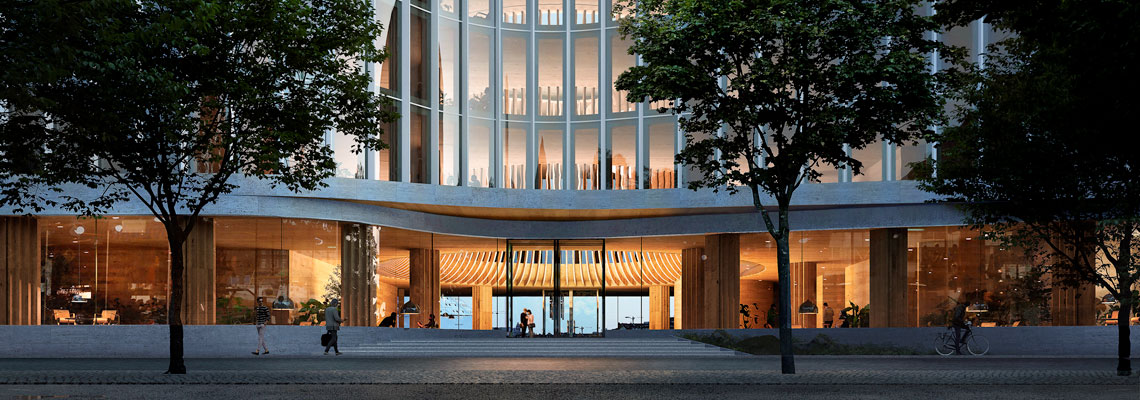Performance-based fire safety design enables noticeable cost savings without compromising the level of fire safety. Cost savings are obtained when, for example, the requirements of load-bearing and partitioning structures and the largest permitted fire compartment sizes are determined based on fire and evacuation simulations. KK-Palokonsultti Oy is Finland’s leading fire engineering design agency in performance-based fire safety design. Our experienced designers know how to take into account the special features of the building in an innovative way and in accordance with the customer’s needs.
Fire safety planning based solely on traditional dimensioning tables may lead to an over-dimensioned fire safety level. In contrast to use of dimensioning tables, performance-based fire safety design takes into account the fire situations likely to occur during the life cycle of the building and the resulting fire loads with their actual locations. In addition, performance-based design takes into account the fire safety systems selected for the site, such as automatic fire alarms and extinguishing systems.
KK-Palokonsultti Oy offers site-specific fire safety planning in both ways, traditional dimensioning table design and performance-based fire safety design. Performance-based fire safety design is our area of expertise. Performance-based fire safety design is always fire safety planning of an exceptionally demanding level. It requires a designer with skills at the FISE exceptionally demanding level, who has sufficient experience and know-how in the methods of performance-based design.
Advantages and limitations of performance-based design
Advantages:
Limitations:
Advantages
- performance-based design creates opportunities for the implementation of innovative construction sites, the formation of large fire departments and the implementation of special solutions in demanding construction sites
- performance-based design can achieve substantial cost savings in construction and material costs
- the building’s carbon footprint decreases through construction and material costs
- operational readiness of the rescue service can be taken into account
- as a final result the overall fire safety of the building corresponds to at least the fire safety level according to the preset fire classes and numerical values of prescribed national norms and regulations; often the real fire safety level is better.
Limitations
- takes a little more time than design according to traditional dimensioning tables
- requires more expertise from the authority, or a third-party statement, to obtain official approval from the authorities
- work requires FISE exceptionally demanding level designer qualification.
Significant cost savings can be achieved by optimizing the use of building materials and products with the help of performance-based design. This also have a significant impact on the building’s carbon footprint. For example, if performance-based design is able to reduce the amount of structural steel used in load-bearing steel structures and the need for fire protection, the cost savings can be huge. Performance-based fire safety design often pays for itself many times over and at the same time ensures that the building’s fire safety level is designed to the right level.
In the near future, performance-based design will also significantly contribute to carbon-neutral construction. National regulations for determining the carbon footprint will be completed by 2025, when consideration of carbon footprint in construction management will become mandatory.
APPLICATIONS OF PERFORMANCE-BASED FIRE SAFETY DESIGN
Performance-based design creates opportunities for the implementation of innovative construction sites, the formation of large fire compartments and the implementation of special solutions in all types of construction sites. The targets of performance-based design vary from individual building materials to large entities. Applications of performance-based design, among others:
- increasing the size of fire compartments
- safely increasing the amount of people and number of floors
- dimensioning of exit arrangements
- examining the effect of the automatic fire extinguishing system
- implementation of load-bearing structures without fire protection
- replacing the firewall with a lighter structure
- fire safety design of wooden frame buildings deviating from the limitations of preset fire classes and numerical values of dimensiong tables
- implementation of partitioning glass structures without fire classification requirements
- examination of the fire properties of a specific building material and their effects in a fire situation
- review of smoke control, large smoke blocks
- examination of the fire safety of cable routes, cabling and insulation
- ensuring the operating conditions of rescue personnel.
The possibilities of performance-based design can be seen in the project planning phase. Most of the performance-based design is done in the building permit phase, but as the project progresses and the structural solutions are specified, there are usually more details that can be solved with performance-based design.
Methods of performance-based fire safety design
As methods of performance-based design, we most commonly use fire and evacuation simulations or other computational analysis, as well as risk analyses. At its simplest, performance-based design can mean a verbal review based on a safety level or a comparison principle, where the safety level is compared to the level of fire safety given by traditional dimensioning tables.
The simulations are used to examine, for example, the fire resistance of structures, the operation of smoke extraction, the functionality of extinguishing systems and the conditions prevailing in the space during a fire. When evacuation simulation is combined with fire simulation, the evacuation safety of the building can also be ensured. The overall safety level of the building, the required fire protection systems and the fires used in the simulations are based on national statistics and probability-based fire risk analysis.
Performance-based fire safety design can also be used to investigate other fire safety issues, such as the suitability of fire extinguishers for extinguishing special chemicals or reactive substances, the spread of thermal radiation at the site, and the spread of fire on various surfaces, cavities and facades. We can also monitor the temperature evolution of structures to assess, for example, the fire resistance of fire glass structures.



